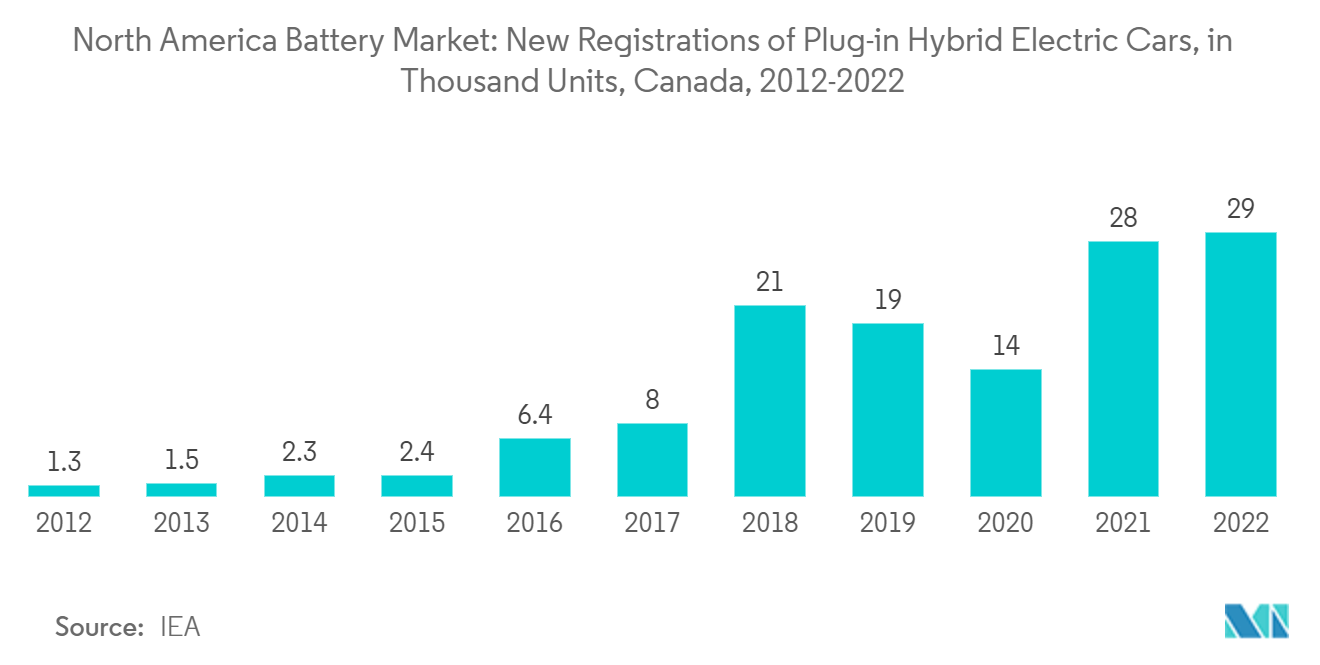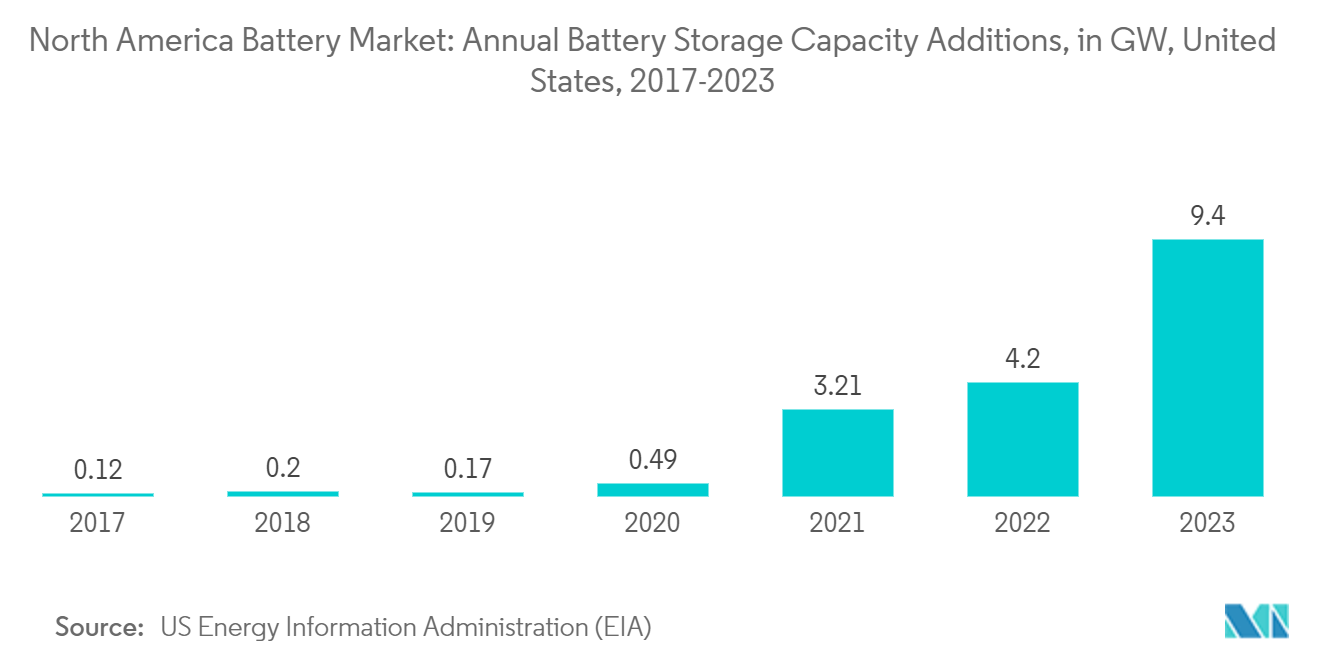Market Trends of North America Battery Industry
Automotive Application to Witness Significant Growth
- The automotive sector is expected to be one of the major end-user segments for batteries, primarily lithium-ion batteries, in the coming years. The penetration of electric vehicles is anticipated to provide a massive impetus for North America's battery industry growth.
- Further, the automotive industry's starting, lighting, and ignition (SLI) accessories also require lead-acid batteries to power their functionalities. SLI batteries are necessary to facilitate a high initial burst of power, which is essential to start a vehicle's engine. These batteries are typically smaller and lighter than deep-cycle batteries.
- The United States is one of the region's largest electric vehicle (EV) markets. According to the Argonne National Laboratory, the total number of plug-in electric light vehicle sales in the United States was about 918,460 units in 2021, with a growth rate of 51.16% from the previous year.
- Furthermore, as per the Office of Energy Efficiency and Renewable Energy, in January 2023, the government announced the development of electric vehicle battery plants in North America. The region is expected to witness a ramping up of manufacturing capacity from 55 gigawatts per year (GWh/year) in 2021 to 1000 GWh/year by 2030. Also, most of the projects in the pipeline are anticipated to initiate production between the years 2025 to 2030. This indicates a robust battery market development for the automotive industry in the next few years.
- Moreover, in July 2023, the Canadian government inked a deal with car manufacturer Stellantis to set up an electric vehicle battery plant in Windsor, Ontario. As per the agreement, the government would give about USD 11 billion in incentives to Stellantis to boost its clean energy supply chain. It is expected to strengthen the battery market for the automotive sector in the country. According to the International Energy Agency, the volume of plug-in hybrid electric car (PHEV) sales in Canada grew to around 29,000 units in 2022, the highest recorded annual PHEV sales in the country. This figure represents an increase of about 3.57% compared with the previous year when around 28,000 units were registered in the country for the first time.
- Moreover, declining lithium-ion battery prices and improving technologies are expected to bring price-competitive electric vehicles to the market, creating demand for batteries in the coming years.

The United States to Dominate the Market
- The United States is one of the major hotspots for batteries across the world on account of the increasing usage of consumer electronics, growing demand for electric vehicles, surging deployment of battery-based energy storage projects, expansion in renewable power infrastructure, and a robust industrial infrastructure. Moreover, the favorable policy toward the deployment of energy storage systems (ESS) in the United States is likely to drive the battery market in the coming years.
- The battery energy storage system (BESS) in the United States has been experiencing notable growth over the past few years, supported by the rising investments in renewable energy infrastructure in the country. Over the past few years, the installed renewable energy capacity and generation have been rising steadily globally, and the United States is one of the global renewable energy hotspots. According to the International Renewable Energy Agency (IRENA), during 2013-22, installed renewable energy capacity grew by more than two times, and as of 2022, the total installed renewable capacity stood at around 351 GW in the United States.
- Due to such a rapid rise in renewable power generation, grid stability has become a significant issue in the United States, with a high level of renewable integration in their grids. As renewable resources like solar and wind generate power intermittently and at various levels, storing this energy during high demand is vital. This will benefit the United States’s battery energy storage system market, which in turn, will support the growth of the batteries market over the forecast period.
- Further, according to the US Energy Information Administration (EIA), in 2023, US battery energy storage capacity will likely more than double, as the developers reported plans to add 9.4 GW of battery storage to the existing 8.8 GW of battery storage capacity. Moreover, 75% of the 20.8 GW of utility-scale battery capacity planned by the developers to be installed from 2022 to 2025 is in Texas (7.9 GW) and California (7.6 GW).
- Furthermore, portable electronic applications are increasing in popularity, as the size of electronic components is continually reducing and processing power is increasing. These new electronic devices require sophisticated and lightweight battery packs. The availability of ever smaller and lighter lithium cells has increased the demand for energy-efficient appliances. The rapid proliferation of li-ion batteries has increased their use in portable and handheld electronic devices. Further, the increasing consumption of smartphones and laptops is aiding the demand for lithium-ion batteries.
- For instance, according to the Consumer Technology Association, in the United States, smartphone sales increased from USD 33.7 billion in 2012 to about USD 74.7 billion in 2022.
- Therefore, owing to the above points, the United States is likely to dominate the North American battery market, supported by increasing urbanization, consumer spending, and technically advanced devices and vehicles.


